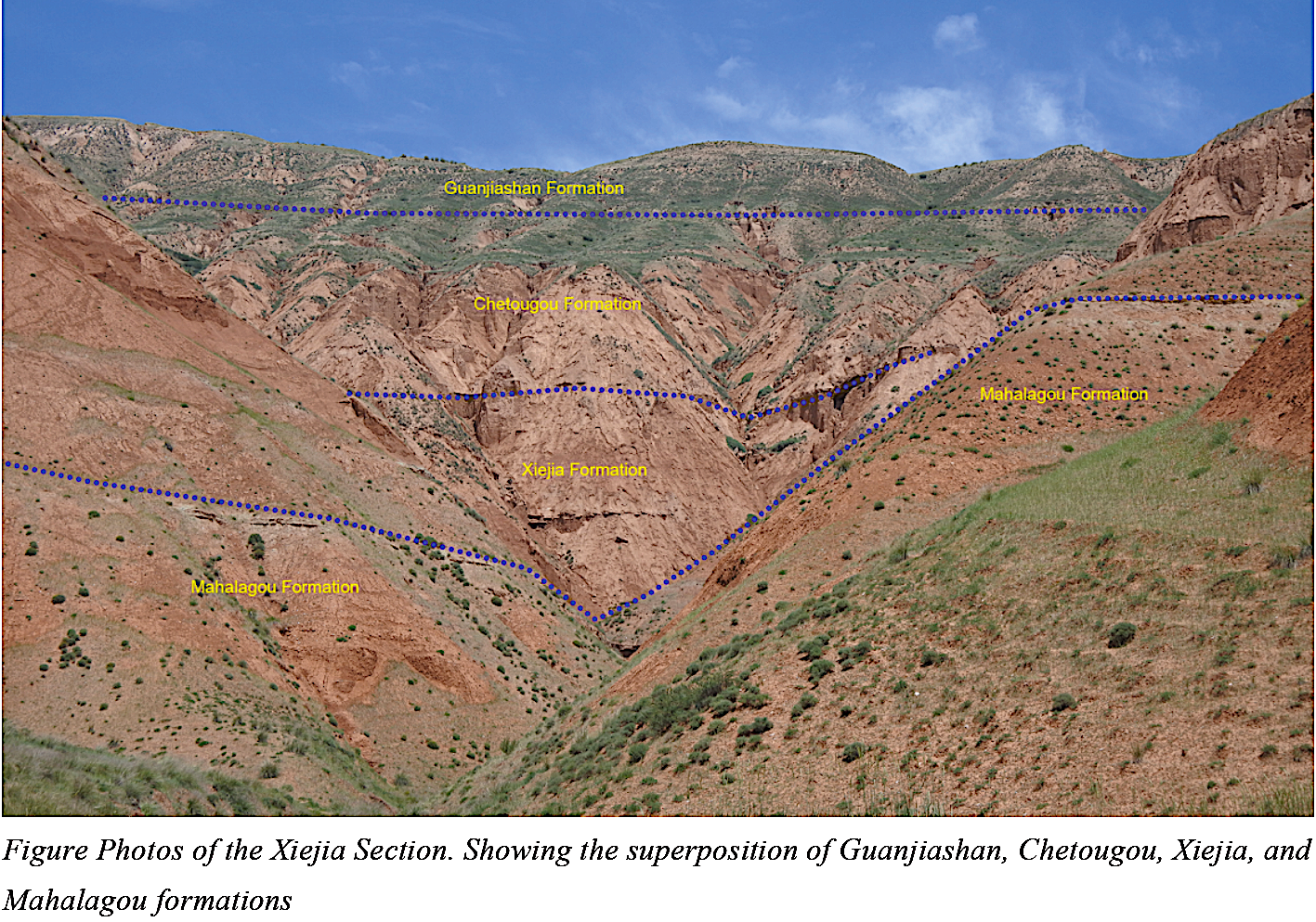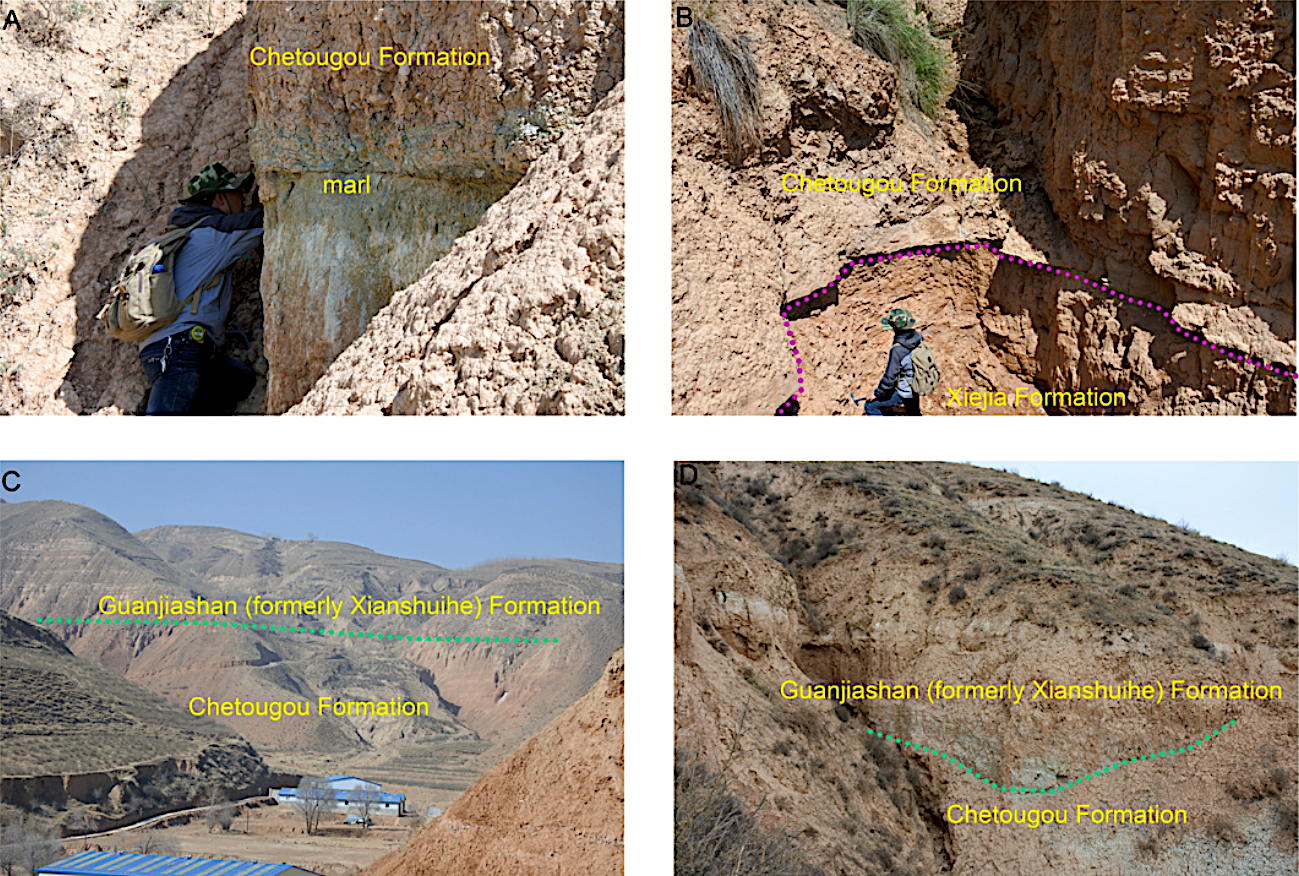Chetougou Fm
Type Locality and Naming
Hualong basin (Xining). The typical section is located 1 km west of Xiejiahe Village, Tianjiazhai Township, Huangzhoung District, Xining City. It is situated southeast of the Xining City with a straight-line distance of 14 km (the same as the Xiejia Fm). Geographical coordinates: 36°31′35.96″N, 101°51′50.43″E (GPS). It was named by the Petroleum Reconnaissance Party, Qinghai Bureau of Geology in 1978.
Lithology and Thickness
Lower member: alternating beds of brownish gray, thin- to moderately thick-bedded, fine-grained gypsiferous quartzose sandstone and yellowish brown, massive, calcareous silty mudstone. Upper member: yellowish brown, massive, silty, calcareous mudstone with sandy, gypsiferous mudstone. The base consists of brownish gray, medium-bedded, fine gravel-bearing, gypsiferous quartzose sandstone. The total thickness is 76 m. Its lithology is uniform and the thickness generally ranges from 61 to 307 m.
[Figure: Photos of the outcrops of the Chetougou Formation in the Xining Basin. A, the reddish silty mudstones and intercalated marls of the Chetougou Formation; B, the conformable contact of the Chetougou Formation and the underlying Xiejia Fm; C, the Chetougou Formation and the overlying Guanjiashan Fm (formerly Xianshuihe Fm); D, the unconformable contact of the Chetougou Formation and the overlying Guanjiashan Fm]
Relationships and Distribution
Lower contact
The Chetougou Formation conformably overlies the Xiejia Fm, separated from the latter by a thin layer of gypseous quartzose sandstone.
Upper contact
The overlying Guanjiashan Fm (formerly referred as Xianshuihe Fm) shows a parallel uncomfortable contact with the Chetougou Formation.
[Figure: Stratigraphic column of the Diaogou and Bapanshan sections, the former is 12 km west and the latter 5 km southwest to the Xiejia ourcrop, showing the superposition of Guanjiashan Fm, Chetougou Fm, Xiejia Fm, and Mahalagou Fm (after Li et al., 2018).]
Regional extent
It is distributed in the Xining Basin.
GeoJSON
Fossils
Angiosperm: Quercoidites-Ulmipollenites-Gramineae assemblage, in which Quercoidites is dominant and Ulmipollenites and Gramineae are the main elements. Ostracods: 15 genera and 46 species, with Eucypris spp. predominating. Charophytes: dominated by the genus Charites; Mammals: Rodentia: Megacricetodon sinensis, M. cf. sinensis, ?Eumyarion sp., Protalactaga tungurensis; Perissodactyla: Rhinocerotidae indet.; Artiodactyla: Cervidae indet.
Age
Depositional setting
Saline lakeshore to fresh-water lakeshore facies.
Additional Information



